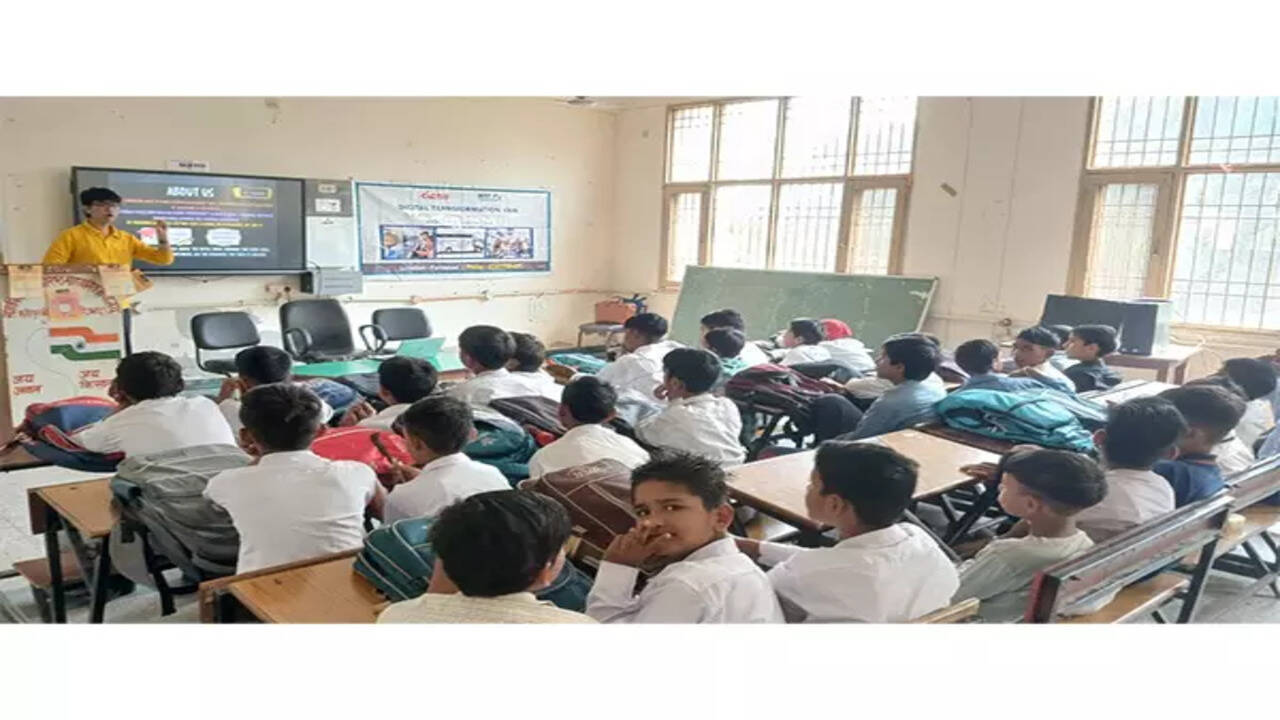Kerala’s General Education Minister, V. Sivankutty, has announced an ambitious reform to do away with the concept of “backbenchers” in state-run school classrooms. In a social media post, he described how seating positions affect student confidence and learning, noting that no child should be left behind academically or emotionally. To guide the change, the government will appoint an expert committee to recommend suitable classroom layouts. The aim is to promote equal opportunity and inclusivity, by redesigning traditional tiered seating into arrangements like U-shapes or semicircles that foster engagement and visibility.
Initial reactions from students have been a mix of excitement and curiosity. Many expressed enthusiasm about sitting closer to teachers and participating more actively. However, some students, particularly older ones, admitted feeling nostalgic about the backbench culture that allowed a sense of privacy and informal peer bonding. Teachers have reassured students that the new layouts will still allow interaction while fostering a more inclusive environment. Student feedback from pilot schools shows increased attentiveness and reduced distractions. The state plans to collect detailed responses from students post-implementation to fine-tune the seating arrangements further.
With classroom layouts evolving, teacher training programs will be crucial. Educators need to adapt to managing discussions in more interactive and visually open settings. Training will focus on fostering equal participation, maintaining discipline without hierarchical seating, and efficiently managing group activities. Workshops will also address strategies for ensuring quieter students are encouraged to engage. The Department of General Education plans to collaborate with teaching institutes to design modules that help teachers transition smoothly into these restructured classrooms, ensuring the reform’s pedagogical objectives are fully realized.

Policy Intent: Boosting Equity and Participation
Sivankutty emphasised that eliminating backbenchers is not about nostalgia but equity. He asserted that seating disparity can subtly reinforce hierarchy, affecting classroom dynamics and student participation. By removing rigid back-row labels, the reform seeks to flatten the classroom structure and boost confidence among less active students. The committee is expected to propose alternative seating models that align with Kerala’s education environment while drawing inspiration from global practices. The minister called for public support, asserting the initiative is a critical part of enhancing learning outcomes and ensuring every student enjoys equal teacher access.
Model Classrooms Already Ringing Change
Several government schools in Kerala have already begun experimenting with U‑shaped or semi‑circular seating models, inspired partly by a Malayalam film where a student conceives a classroom without backbenches. These layouts place the teacher centrally and students equidistant, facilitating eye contact and two‑way interaction. Educators report increased attention, better discipline, and improved teacher oversight. The format also dilutes the stigma associated with sitting at the back. Anecdotal feedback indicates that both outgoing and timid learners benefit from the new layout, as learning environments become more inclusive and democratic.
Students in pilot schools have expressed relief at the elimination of backbench labels. Many noted that seating position often became a marker of academic ranking or popularity, making it difficult for quieter students to participate. Some initially found the new arrangements unfamiliar but soon appreciated the better interaction with teachers. Several students mentioned that cluster or U-shaped layouts made group discussions easier and less intimidating. While older students have a mix of opinions, younger children reportedly adapt quickly, enjoying the closer engagement. Overall, the reform appears to be fostering a more inclusive classroom atmosphere, particularly in primary sections.
Broader Educational Implications and Research
Education experts believe the reform could have ripple effects beyond seating. By breaking entrenched hierarchies, classrooms become more collaborative and participatory. Studies show that proximity to the teacher can improve student engagement, reduce behavioral issues, and help detection of individual challenges. Kerala’s move aligns with global pedagogical research favoring circular or flexible seating arrangements. The expert panel—once formed—will examine evidence-based practices and adapt models best suited to Kerala’s classrooms, considering factors like teacher training needs, class size, and furniture logistics.
Teachers are being oriented to adapt their teaching strategies to the new seating configurations. Managing eye contact, distributing attention evenly, and fostering balanced participation are focal points of the training modules. Many educators are enthusiastic, seeing this as an opportunity to revamp classroom dynamics. However, teachers also highlighted challenges such as maintaining discipline and handling increased student visibility in larger classrooms. The government is preparing detailed teacher guides and conducting workshops to ensure smooth pedagogical transitions. Experienced mentors from model schools are expected to assist during the initial phases of rollout in new districts.
Preparing Logistics and Infrastructure
Implementing seating reforms statewide presents logistical challenges. Schools will need to reorganise benches, reconfigure classrooms, and possibly acquire new furniture. Facilities teams must ensure space accommodates U‑shaped layouts without compromising movement. Teachers will require orientation to manage interaction dynamics in new settings. Sivankutty’s committee is expected to provide operational guidelines on retooling classrooms effectively and affordably. Pilot feedback will inform optimal bench density, visual sightlines, and teacher placement. The ministry plans phased implementation—starting with lower primary classes—and expanding gradually as infrastructure and training roll out.

Addressing Skepticism and Nostalgia
The reform has evoked mixed reactions: many educators and parents welcome it as progressive, while some former students and observers express nostalgia for the backbench experience. Business figures and celebrities have commented lightheartedly, recalling the freedom and creativity often associated with those seats. Critics argue the change may disrupt learning flows or feel uncomfortable for some children. Sivankutty responded that the intent is not to erase memories but to dismantle harmful stereotypes and ensure seating does not determine student value or access. Change management measures, including orientation and community dialogue, are being planned to address transition anxiety.
Complementary Measures: Anti‑Ragging Cells and Child Safety
The backbench reform comes amid broader education reforms under Sivankutty’s tenure. Earlier, the government announced plans to establish anti‑ragging cells in all schools, aiming to curb bullying and peer violence. These cells will be overseen by departmental committees and aim to ensure safe school environments. The minister also responded strongly to caste- or gender-based discrimination concerns raised in recent student suicides. Against this backdrop, the seating reformation is part of a broader approach to transform classrooms into safe, inclusive, and dignifying spaces for all Kerala children.
While urban schools with ample space can accommodate U-shaped layouts, rural and smaller schools may face challenges due to limited classroom dimensions. In such cases, hybrid models are being explored—such as partial clusters or staggered rows that still minimize backbench isolation. The expert committee will assess infrastructure limitations in rural settings and propose adaptable models. Additionally, local carpenter guilds and school management committees will be engaged to reconfigure existing furniture to fit the new designs, ensuring that the reform does not remain confined to urban centres but is embraced uniformly across Kerala.
Inclusive Education Beyond Backbenches
V. Sivankutty emphasised the reform is not limited to seating: it’s part of larger equity-focused measures. The state continues to oppose commercialization of education and requirements of central schemes mandating school naming or branding. Kerala recently declined to adopt the PM‑SHRI scheme, citing concerns over privatization and communal biases. Instead, efforts focus on equal access, standardised curricula across unaided schools, and mandatory NOCs. The seating initiative aligns with these goals by fostering egalitarian classrooms devoid of spatial stigmas and reinforcing the leadership’s commitment to secular, accessible education for all.

Planning Expert Panel and Phased Rollout
An expert committee will include pedagogical scholars, architects, child psychologists, school principals, and representatives of teacher unions. Its mandate is to evaluate global models, observe pilot classrooms, and recommend a seating layout that balances inclusivity, discipline, and operational feasibility. Models under consideration include U‑shape, semicircle, cluster seating, and hybrid circular formats. The panel is expected to submit recommendations within weeks, after which schools will begin phased implementation—starting with lower-primary grades and schools with adequate infrastructure. Feedback loops will inform refinements before full-scale rollout.
Scaling the reform statewide will require substantial resource allocation. Costs involve furniture modifications, space adjustments, teacher training, and classroom redesign. Budgetary provisions will be sought through state funds, with proposals for central support under educational development schemes. The government acknowledges that some schools may require phased timelines based on their readiness. Sivankutty has assured that no school will be left out due to lack of funds. Community participation, including involvement from local self-governments and corporate CSR initiatives, is being encouraged to bridge potential funding gaps for infrastructure upgrades.
Kerala’s initiative has caught the attention of education departments in other states. Officials from Tamil Nadu and Karnataka have reportedly inquired about the pilot program’s outcomes. Educationists see Kerala’s move as a pioneering step that challenges traditional classroom norms across India. While some states are adopting flexible seating in elite private schools, Kerala’s decision to implement it in government schools on a mass scale is considered pathbreaking. If successful, it could trigger similar reforms in other regions, fostering a broader conversation about spatial hierarchies in Indian educational institutions.
Expected Impact and Future Confidence Building
By eliminating backbench distinctions, Kerala hopes to enhance student confidence, reduce academic disengagement, and encourage greater participation across demographics. Principals anticipate more equitable teacher attention, while quieter students may feel empowered to ask questions. Teachers expect to identify learning gaps sooner and personalise teaching. In the long term, the reform aims to shift school norms towards collaboration rather than hierarchy. As Kerala pioneers the move nationally, its education system is likely to earn recognition as progressive, inclusive, and student-centric.
Follow: Kerala Government
Also read: Home | Channel 6 Network – Latest News, Breaking Updates: Politics, Business, Tech & More

